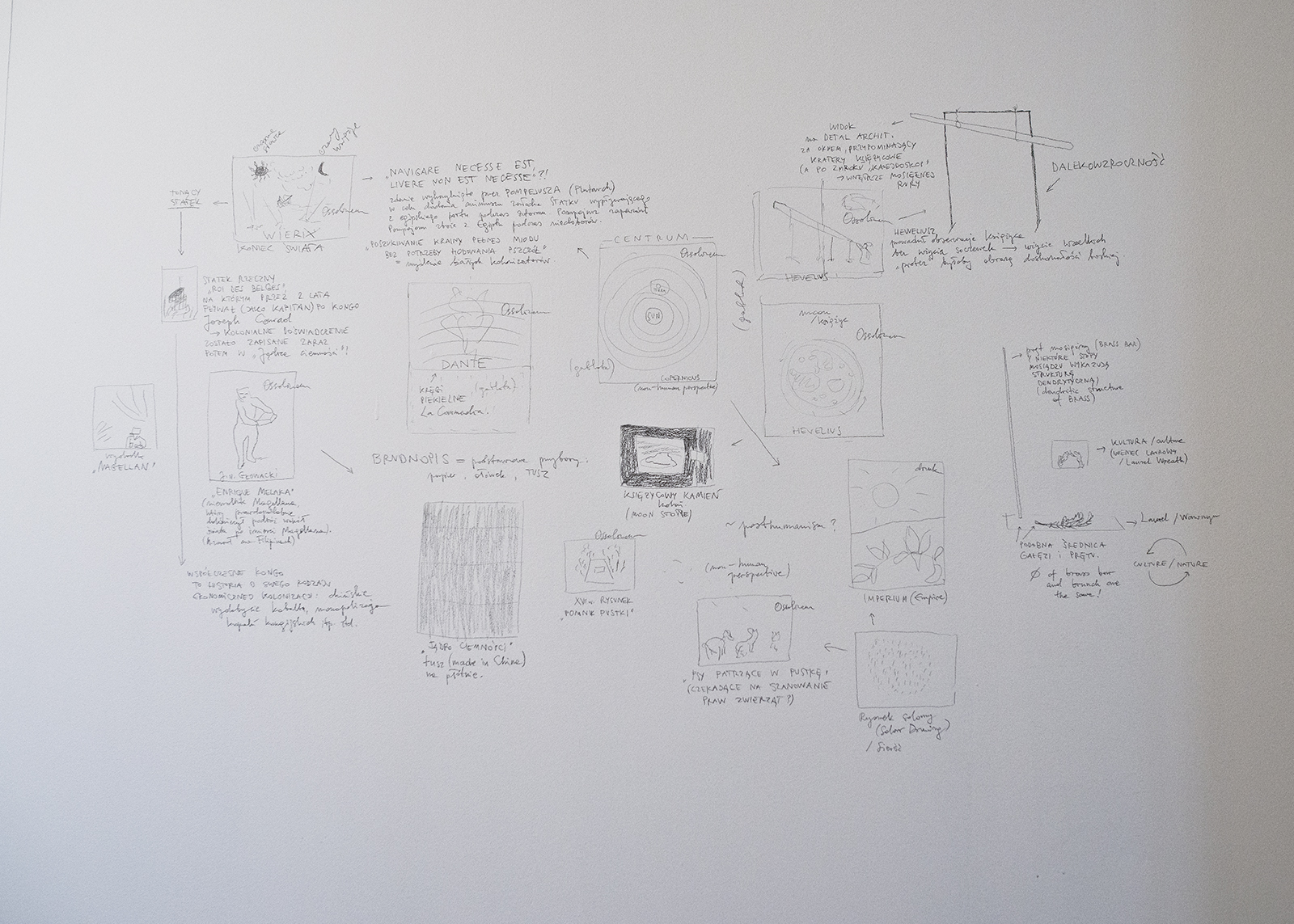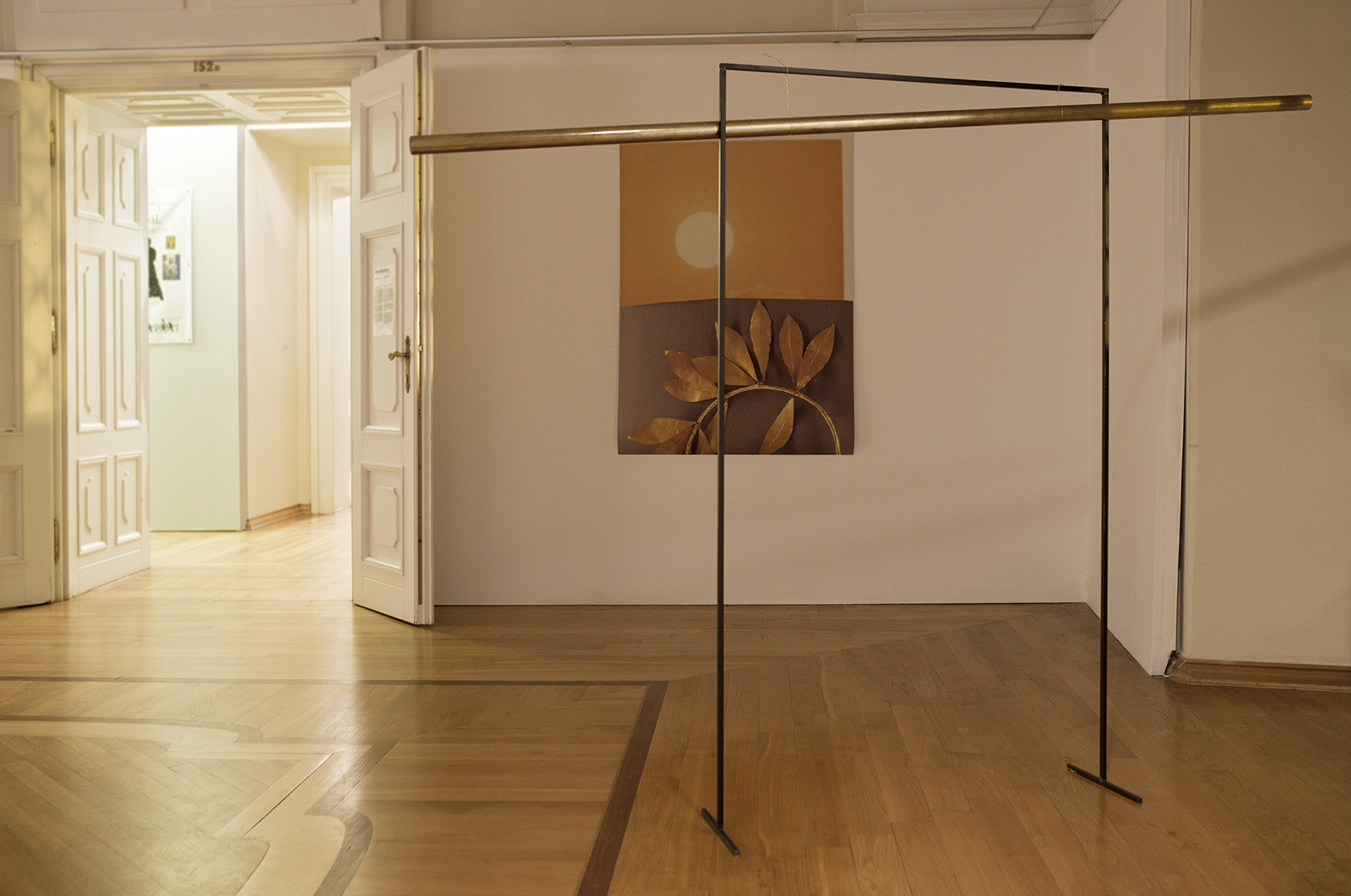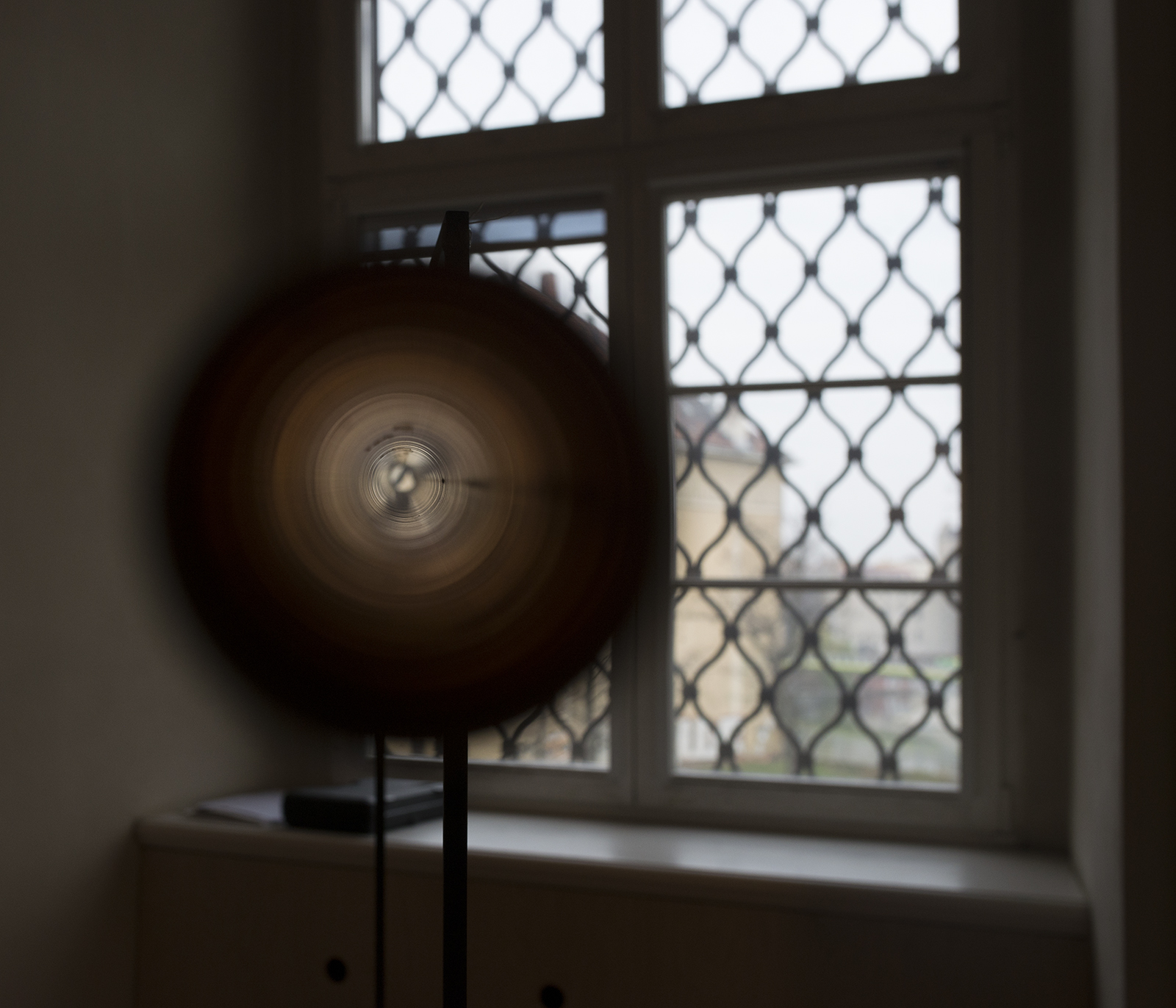Rough Sketch
arrangement in Ossoliński National Institue, Wrocław (PL)
built around the selected treasures from the collection of the Institute’s library
curator: Katarzyna Roj
Wrocław Drawing Triennial, 2015
some of the works were made during the residency
at Civitella Ranieri Foundation.

Rough Sketch
drawing; pencil on the wall, various dimensions, 2015
The mindmap of the arrangement with briefly described context of each artwork and book.
installation view in Ossolineum,
a.o. Heart of Darkness
polish linen, chinese ink, foil, steel
various dimentions, 2015


cabinet arranged for the treasure books

Nicolaus Copernicus De revolutionibus orbium coelestium libri VI.
Nürnberg, Johann Petreius, 1543. 2°
from the National Ossoliński Institut collection

installation view in the interior of Ossoliński’s Institut

Jan Hevelius Machinae coelestis pars prior oranographiam sive
instrumentorum astronomicorum... descriptionem... exhibens..
Danzig, print. author Simon Reiniger, 1673. 2°
from the National Ossoliński Institut collection
Faresight
(according to Jan Hevelius perfect sight)
brass pipe, steel
250 x 130 x 20 cm, 2015
Jan Hevelius crafted many lenses commisioned by other european astronomers for their instruments. Although himself, he never used any lenses in his telescope. Apart from possessing a physically perfect sight, he claimed that because the man was created in the image and likeness of God, using any "prosthesis" would insult God. Faresight was made shortly after 2015 Polish parliamentary election as the impulse of longing for secular state of Poland.



The notion of montage may shed some light on the mysterious relationship between the artist and his/her sketchbook. The image of rough sketching brings to mind pages of messy notes, records without any hierarchy, casual entries of fleeting thoughts. A thought is not crossed out, it gets connected with the next one. Anything can be seen from different angles, various points of view. A thought is like a fly circling at a lamp—its erratic trajectory ensures a proximity to the object.
Less than 500 years ago Copernicus and Galileo „removed” Earth from the center of the universe. This has had enormous consequences for all scientific disciplines, as well as contributed to the eventual breaking of the pact between philosophy and cosmology. Interestingly, this turn hasn’t had a significant impact on the everyday human experience, neither in personal nor collective dimensions. It’s still the idea of man at the center of the universe. Even the postmodern doctrine (and its deconstructive mechanism) reveled in the subjectivity of people, almost refusing it to anything else. And this is where the visual essay of Kama Sokolnicka begins, including their own drawings, found objects, magnified prints and seven works from the collection of the National Ossolinski Institute.
Among them is Nicholas Copernicus book On the Revolutions of the Heavenly Spheres from 1543, Dante’s The Divine Comedy from 1481 or Selenografia sive lunae descriptio... by Jan Hevelius from 1647.
The concept of revolving is essential here. The artist, disappointed with the linear structure of knowledge, draws structures based on the equivalence of many elements where the sun and its symbolism of power are in the center. The sequences of thoughts are built step by step, intuitively combining facts that seemingly can’t be matched. Such assembly of the installation has, however, a critical potential. In search of arguments for a new subjectivity the artist introduces animals and slaves to the stage and confronts nature with culture anew.
—Katarzyna Roj,
Less than 500 years ago Copernicus and Galileo „removed” Earth from the center of the universe. This has had enormous consequences for all scientific disciplines, as well as contributed to the eventual breaking of the pact between philosophy and cosmology. Interestingly, this turn hasn’t had a significant impact on the everyday human experience, neither in personal nor collective dimensions. It’s still the idea of man at the center of the universe. Even the postmodern doctrine (and its deconstructive mechanism) reveled in the subjectivity of people, almost refusing it to anything else. And this is where the visual essay of Kama Sokolnicka begins, including their own drawings, found objects, magnified prints and seven works from the collection of the National Ossolinski Institute.
Among them is Nicholas Copernicus book On the Revolutions of the Heavenly Spheres from 1543, Dante’s The Divine Comedy from 1481 or Selenografia sive lunae descriptio... by Jan Hevelius from 1647.
The concept of revolving is essential here. The artist, disappointed with the linear structure of knowledge, draws structures based on the equivalence of many elements where the sun and its symbolism of power are in the center. The sequences of thoughts are built step by step, intuitively combining facts that seemingly can’t be matched. Such assembly of the installation has, however, a critical potential. In search of arguments for a new subjectivity the artist introduces animals and slaves to the stage and confronts nature with culture anew.
—Katarzyna Roj,
from the curatorial text

(nature vs culture)
brass bar, laurel twig (same diameter as the rod), inkjet archival print various dimensions, 2015
Moon Rock
collage on black foil, tape
~21 x 36 cm, 2015


“Magellan”
inkjet archival print
70 x 70 cm, 2015
